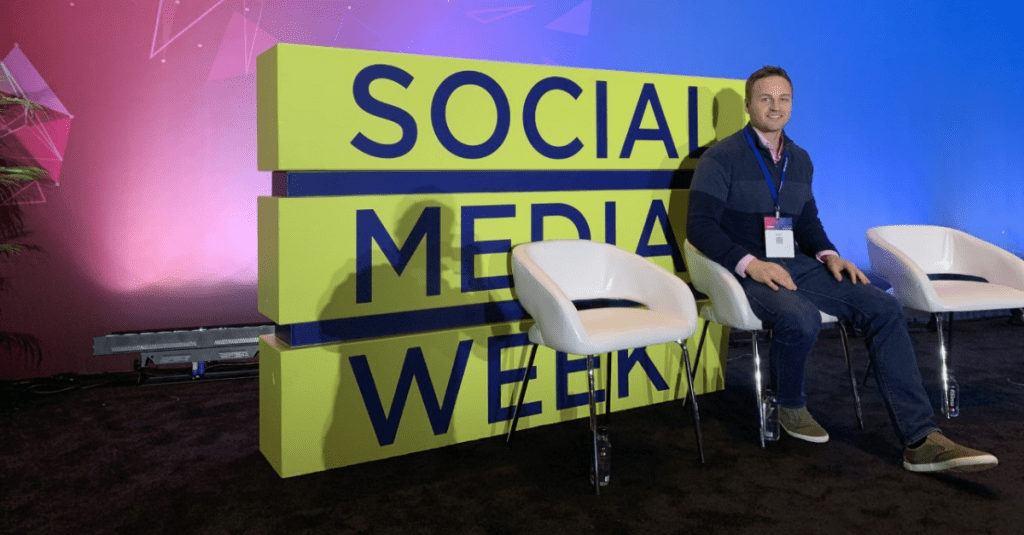The formula for marketing success in 2019 = use the right platforms + post “low-production” content that’s relatable to consumers + share personalized messaging that speaks to your audience’s needs. Sounds pretty straightforward, right? No? Allow me to elaborate.
Last week at Social Media Week NYC, I had the pleasure of mingling with 2,500+ peers as we collectively listened to, discussed and dissected myriad POVs on the digital marketing landscape. As one might expect, the conversations were filled with jargon and buzzwords but, thankfully, also plenty of top-notch creative and thoughtful ideas.

Below are a few of the insights I took away from the conference, and how those observations will inform my work as an online communicator at Ketchum…
How to: stop wasting your marketing budget and use the right platforms
Turns out, no one appreciates your overly-polished corporate video that you interrupted their favorite TV show with. There, I said it.
A clip of a shiny, new car driving up a mountainside indiscriminately blasted out to the masses isn’t cutting it anymore. And businesses that are still employing this tactic are increasingly getting less value for their money.
The cost of reaching 1,000 viewers on a national TV spot is $42.90. To achieve that reach on social, you’d only have to pay $9.06 on Facebook, $6.70 on Instagram, $6.05 on LinkedIn and $5.76 on Twitter.
And unlike a current TV ad’s broad reach, you can be as granular with targeting as you’d like on social. On Facebook, for example, you can target 29-31 year-olds within a 2-mile radius of Little Falls, Minnesota who have already indicated an interest in cars. That’s pretty powerful, if you ask me.
Yet, it seems companies continue to spend massive amounts of money producing the aforementioned type of content while casting a wide net through TV commercials and even, to a lesser extent, replicating that same tactic on social.
Here’s the problem: consumers want content with a lower production value that is personalized to them. Let’s dig a little deeper, shall we.
How to: share social content that resonates with consumers
Success in the current marketing landscape lies with social-first content. Consumers are thirsting for the type of stuff a friend could have captured on their phone, again, because it’s relatable.
Your strongest ally to help fulfill that desire is user generated content (UGC).
On the stage at Social Media Week, one social lead at a global athletic apparel company revealed that sharing UGC on their Instagram account increased viewership by 70 percent.
During another presentation, Jeff Ragovin shared that 60 percent of consumers say user generated content is the most authentic form of content, and provided three ways to capture it:
- Curate: Scrape existing UGC from social platforms via organic searches
- Target: Identify and strike up partnerships with content creators in your space
- Scale: Leverage tech, like a social listening tool, to speed up the process of finding UGC and its creators
Not only does UGC resonate with consumers, but the production cost is often $0. Not too shabby.
But let’s not stop at finding and posting the right content. Let’s share it with the right message.
How to: meet consumer desires through personalized messaging
Marketers often end up getting too focused on data points instead of trying to understand what drove them to purchase in the first place.
As Terry Rice pointed out, “Data tells you who bought something, but not the story behind their purchase.”
The key, he said, is to become data-informed, not just data-driven.
What he alluded to is that we need to uncover the emotions that lead to purchases and engagements through social listening.
He shared a great example of tapping into Subreddits by using search terms around a company’s product to uncover their target audience’s biggest pain points. These same sentiments are often also available in the comment sections on social, he pointed out.
When we understand how our audience truly feels, we’re able to speak to their needs and include them more intimately in the stories we tell, which ultimately leads to increased empathy from consumers.
Why you should take action now…
We’re living in the golden era of social media marketing. These platforms have incredibly granular targeting capabilities available at a relatively low cost. Combine that with the opportunity to leverage UGC and the desires shared by consumers online, and you have the foundation for a powerful marketing strategy.
But hurry, time to capitalize on this approach is running out.
It’s only a matter of time before the world’s largest companies begin to shift larger amounts of their massive marketing budgets to social, which will drive up the cost for all. Furthermore, data privacy issues and the rising popularity of one-on-one private messaging (think WhatsApp, Instagram DMs and Facebook Messenger) are threatening to hide all of that lovely content and data we currently have at our disposal.
The time is now to reconsider how and where you’re spending your marketing dollars. If you have any questions, feel free to connect with me on LinkedIn.


